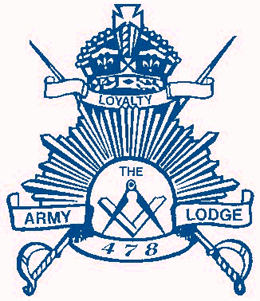HISTORY OF THE ARMY LODGE
The Army Lodge was consecrated on 5th December 1929. A large proportion of the foundation members had seen active service during World War I, several landing with the Australian troops at Gallipoli.
Included in the foundation membership were several who were already, or were to become, well known as leaders of the Australian Army. These included Lt Gen Sir John Lavarack, then a colonel, but destined to become CGS and later Governor of Queensland, Lt Gen Sir John Northcott, then a major, who would also become CGS and later Governor of New South Wales, and Maj Gen H.E. "Pompey" Elliott, a legend among 1st AIF soldiers, and later a Senator for Victoria.
The Lodge grew steadily, successfully surviving the problems of the Great Depression of the 1930s and the uncertainty of the WWII years. It shared in the popularity of Freemasonry immediately post-war and its decline in membership in the 1980s and 1990s.
Initially drawing most of its membership from Army Headquarters personnel it had perforce to look elsewhere when that organisation moved to Canberra in the 1960s.
Membership was opened to non-military men in 1968. The Lodge became popular among members of the Royal Australian Corps of Signals about this time, and Army Reserve soldiers started to join. It is from the Reserve that most of the recent increase in membership has come.
From its inception the Lodge met at the Freemasons Hall, at 25 Collins Street, and moved to the Masonic Centre in East Melbourne when that was opened in 1968. Since 2009 it has met at the Ivalda Masonic Centre in Ivanhoe.
